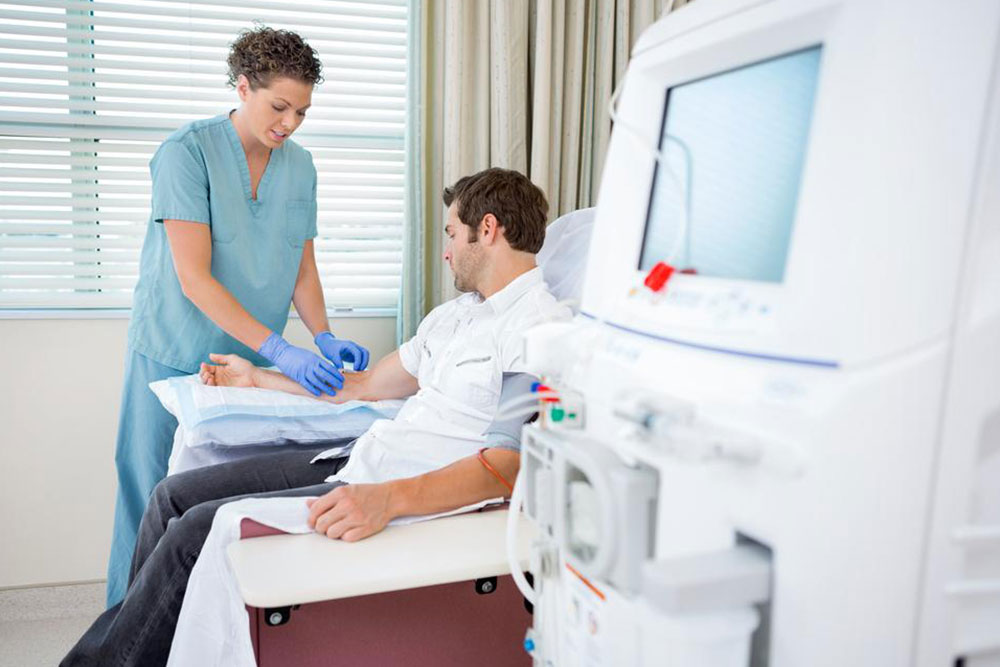Comprehensive Guide to Kidney Dialysis: Essential Knowledge for Patients and Caregivers
This comprehensive guide explores the vital aspects of kidney dialysis, including its types, risks, dietary considerations, costs, and how it helps manage kidney failure. Gain insights into how dialysis supports health, the importance of proper nutrition, and the financial implications for patients. Stay informed and empowered with essential knowledge for better health outcomes.

An In-Depth Look at Kidney Dialysis and Its Critical Role in Health Management
Kidney failure is a significant health concern that affects millions worldwide. When the kidneys lose their ability to efficiently remove waste, excess fluids, and maintain electrolyte balance, dialysis becomes a crucial lifeline. This medical procedure acts as a substitute for some kidney functions, helping prevent the dangerous buildup of toxins and supporting overall health. Understanding the various types of dialysis, associated risks, dietary requirements, and financial implications can empower patients and caregivers to make informed decisions and optimize treatment outcomes.
Kidney dialysis, also known as renal replacement therapy, is designed to perform some vital functions of healthy kidneys. For those with compromised kidney function, it helps clear waste products like urea, creatinine, and excess salts from the blood. Maintaining proper electrolyte balance, especially levels of sodium and potassium, is essential for controlling blood pressure and ensuring proper muscle and nerve function. Dialysis plays a vital role in extending the life expectancy and improving the quality of life for patients with chronic kidney disease or acute kidney failure.
Understanding Kidney Functions and How Dialysis Acts as a Substitute
Normal kidneys filter approximately 120 to 150 quarts of blood every day, removing waste and excess fluids while balancing various electrolytes.
They produce hormones such as erythropoietin, which stimulates red blood cell production, and renin, which helps regulate blood pressure.
Additionally, kidneys contribute to vitamin D activation, which is essential for bone health.
When kidney failure occurs, these functions deteriorate, leading to toxin accumulation, fluid overload, and electrolyte imbalances. Dialysis compensates for these lost functions, preventing the progression of symptoms and life-threatening complications.
Types of Kidney Dialysis and Their Applications
Peritoneal Dialysis: This method uses the peritoneal membrane in the abdomen as a filter. A dialysis solution is introduced into the peritoneal cavity through a catheter, allowing waste and excess fluids to diffuse into the solution, which is then drained. Peritoneal dialysis offers patients greater flexibility, as it can often be performed at home—either manually or via automated machines during sleep. Though less rapid than hemodialysis, it provides effective waste removal and preserves residual kidney function longer for some patients.
Intermittent Hemodialysis: This is the most common form of dialysis, involving removing blood from the body, filtering it through a machine with specialized filters, and then returning it. Sessions typically last 3-4 hours and are performed 3 times a week. It requires access to the bloodstream via fistulas, grafts, or catheters. Patients generally need to visit a dialysis center, though home hemodialysis options are available for eligible individuals.
Continuous Renal Replacement Therapy (CRRT): Primarily used in intensive care units, CRRT provides continuous filtration of blood over a 24-hour period. This method is suitable for critically ill patients who cannot tolerate rapid fluid and electrolyte shifts associated with intermittent hemodialysis. It offers gentle, steady removal of waste and excess fluids, helping stabilize severely ill patients.
Potential Risks and Complications Associated with Dialysis
The lifesaving nature of dialysis does not come without risks. Patients should be aware of potential complications, which include:
Infections, particularly at access sites such as fistulas or catheters.
Weight gain due to fluid retention between sessions, leading to hypertension and heart strain.
Anemia caused by reduced erythropoietin production and blood loss during treatment.
Electrolyte disturbances, such as hyperkalemia (high potassium), which can affect heart rhythm.
Muscle cramps, abdominal pain, itchy skin, sleep disturbances, and joint stiffness are common side effects.
Effective management and close monitoring can mitigate many of these risks, ensuring safer and more comfortable dialysis experiences.
Nutrition and Diet Management During Dialysis
Proper nutrition plays a vital role in dialysis patient care. Dietary recommendations include:
Protein Intake: Consuming high-quality protein such as lean meats, eggs, and dairy helps replenish lost proteins and maintains muscle mass. Protein needs are higher in dialysis patients due to increased protein breakdown during treatment.
Sodium and Potassium Control: Limiting foods high in salt and potassium, such as processed foods, bananas, oranges, and potatoes, helps prevent swelling, high blood pressure, and dangerous heart rhythm abnormalities.
Fluid Restrictions: Managing fluid intake—usually 1-1.5 liters per day—prevents overload, edema, and hypertension.
Tailored nutritional plans are crucial for boosting overall health, reducing complications, and improving longevity in dialysis patients.
Financial Considerations and Cost of Dialysis
Dialysis is an expensive treatment that demands significant financial resources. Each session typically lasts 3-5 hours, performed multiple times weekly. Without insurance, the annual costs can reach up to US$72,000 or more, posing financial challenges for many patients.
In countries like the United States, the average weekly expense per patient for dialysis—including medications and related healthcare—is approximately US$114. For patients relying on insurance, coverage varies widely, with Medicare and other programs often bearing significant portions of costs. Nonetheless, the ongoing financial burden underscores the importance of accessible healthcare policies and support systems to assist patients in managing treatment expenses effectively.
Goals, Benefits, and Quality of Life Improvements with Dialysis
While dialysis does not cure kidney disease, it effectively manages the body's chemical and fluid balance, preventing life-threatening complications. Patients often undergo dialysis regularly until they are candidates for kidney transplantation, which remains the definitive treatment for end-stage renal disease.
Adapting to dialysis involves not only medical management but also lifestyle adjustments. Wearing comfortable, loose-fitting clothing during treatments can enhance comfort and reduce physical discomfort. Additionally, staying informed about treatment options, potential side effects, and self-care strategies empowers patients to participate actively in their health management.
Advances in dialysis technology, improved biocompatible materials, and better patient education continue to enhance quality of life for those living with chronic kidney disease. Support networks, nutritional counseling, and psychological care are integral to helping patients cope with the demands of ongoing treatment and maintaining a positive outlook.




